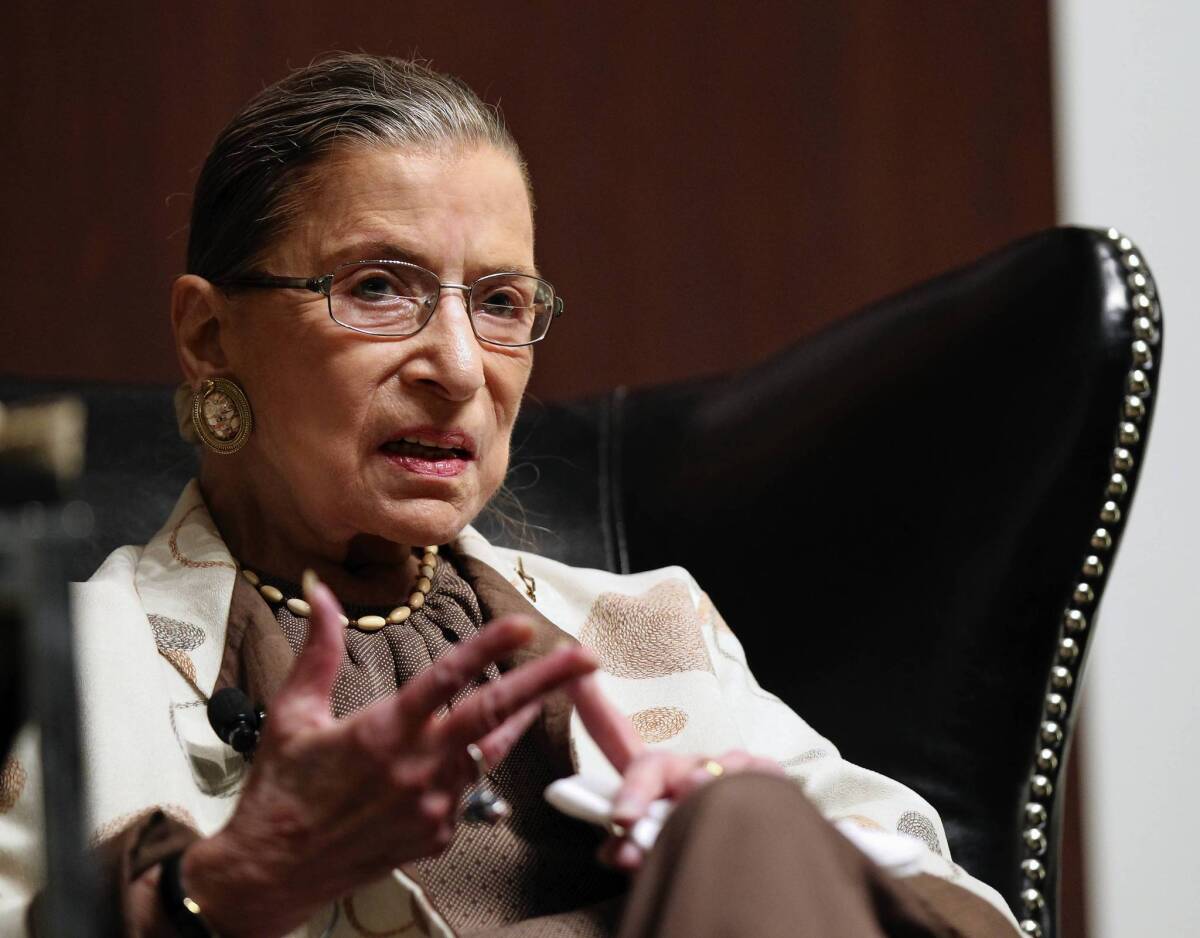Supreme Court lifts time limit on some ‘actual innocence’ appeals

- Share via
WASHINGTON — The Supreme Court gave a second chance Tuesday to prisoners who come up with strong new evidence of their innocence, but who have waited too long to file an appeal.
In a 5-4 decision, the justices lifted the one-year time limit for filing such appeals in a federal court.
Only the rare case will benefit from this leniency, they said.
A prisoner must make a “convincing showing of actual innocence,” Justice Ruth Bader Ginsburg said. The new evidence must be strong enough to persuade a judge that “no juror, acting reasonably, would have voted to find him guilty” at his trial had the jury known of it, she said.
Although the decision dealt only with the procedural rules, it came after two decades in which hundreds of prisoners have been found to be innocent based on new DNA tests. Such new evidence or new statements from old witnesses may run up against the time limit for appeals.
In 1996, Congress set the one-year deadline for state inmates to lodge federal appeals, partly because some prisoners had filed endless appeals that had prevented state officials from carrying out executions.
But on several occasions since then, the court has confronted cases where a prisoner has new evidence that might establish his innocence. And in those cases, the justices have decided to open the door slightly to permit further appeals. Doing so may prevent a “fundamental miscarriage of justice,” they said.
In 2006, the Supreme Court allowed new appeals for convicted Tennessee murderer Paul House shortly before he was to be executed. Three years later, House was set free when new DNA tests on the victim pointed to an unknown suspect.
On Tuesday, the court cited House’s case and said it helped establish the principle that claims of “actual innocence” sometimes call for relaxing the rules that limit appeals.
The latest case arose when a Michigan prisoner serving a life term for murder came forward with sworn statements from three witnesses who pointed to another man as the killer. But the defendant, Floyd Perkins, had waited five years to reopen his appeal in federal court, well beyond the one-year limit for such claims.
The case raised the question of whether the limit could be lifted when there is a strong showing of actual innocence. “Our answer is a qualified yes,” Ginsburg said. Justices Anthony M. Kennedy, Stephen G. Breyer, Sonia Sotomayor and Elena Kagan joined Ginsburg in the majority.
It’s unclear whether Perkins will benefit from the ruling. Ginsburg cast doubt on whether his new evidence was enough to prove his innocence.
In dissent, Justice Antonin Scalia derided Ginsburg’s opinion as a “blooper reel” that was “feeble” in its reasoning and “bizarre” in its conclusions. “This court has no power” to waive the one-year limit set by Congress, he said. Chief Justice John G. Roberts Jr. and Justices Clarence Thomas and Samuel A. Alito Jr. agreed.
“This decision won’t affect a huge number of cases, but for the cases it will affect, the impact will be huge,” said Linda Starr, an attorney for the Northern California Innocence Project at Santa Clara University. She cited the case of George Souliotes, a Modesto man convicted of setting a deadly fire, who won a new hearing last year based on his evidence of actual innocence.
California Deputy Atty. Gen. Ward Campbell said the court had dealt a “body blow to the state’s role in the criminal justice system and the victims’ interest in finality for criminal convictions.”
More to Read
Sign up for Essential California
The most important California stories and recommendations in your inbox every morning.
You may occasionally receive promotional content from the Los Angeles Times.











